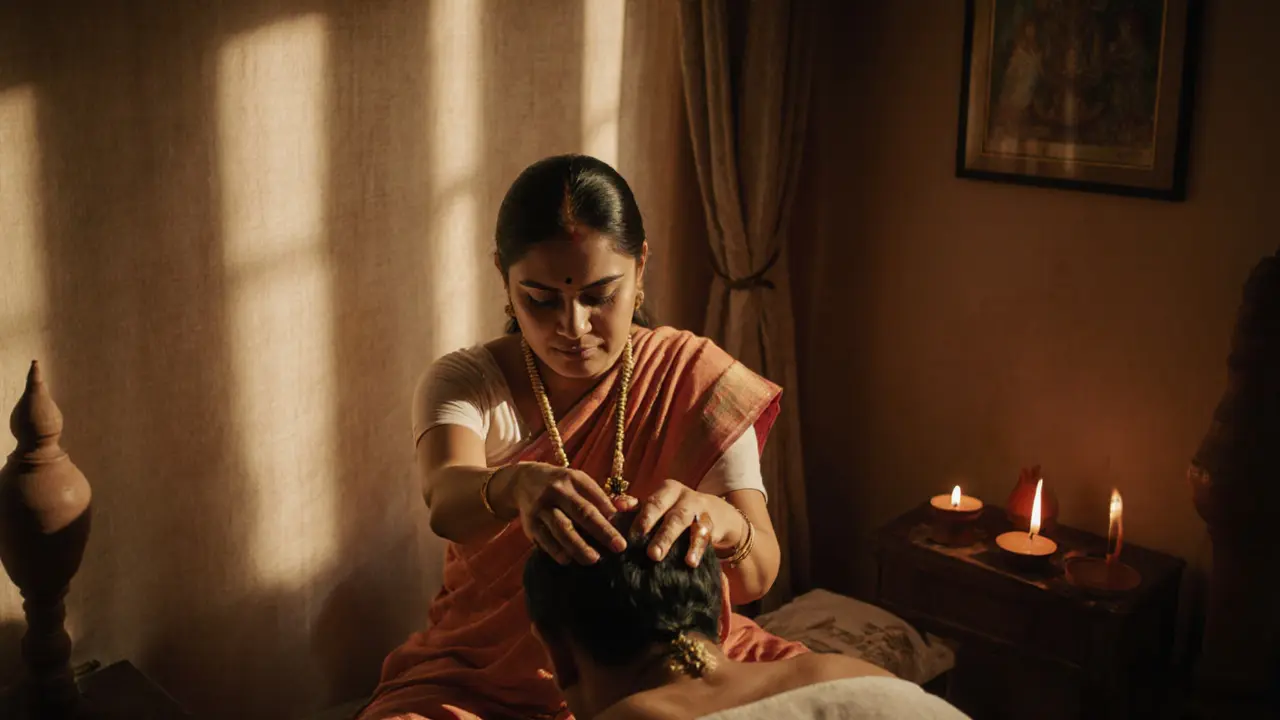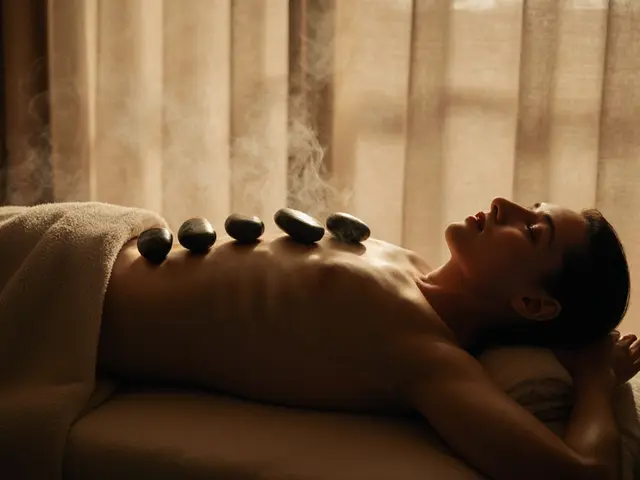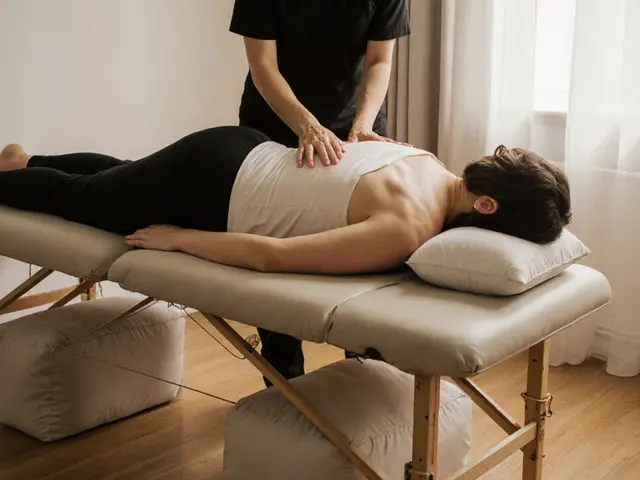When you think of Indian head massage, you might picture someone sitting comfortably while skilled hands work through the scalp, neck, and shoulders. But that soothing ritual has a name older than modern spas - a name rooted in ancient Indian medicine. The traditional name for Indian head massage is shiroabhyanga.
What Shiroabhyanga Really Means
The word shiroabhyanga comes from two Sanskrit words: shiro, meaning "head," and abhyanga, meaning "oil massage." So, literally, it’s "head oil massage." This isn’t just a relaxation technique - it’s a therapeutic practice with roots in Ayurveda, India’s 5,000-year-old system of holistic health.
Ayurveda doesn’t treat the head as separate from the body. It sees the head as the seat of the senses, the mind, and vital energy. Shiroabhyanga targets key pressure points along the scalp, temples, neck, and upper back. These points connect to the nervous system, circulation, and even digestion. When done right, it’s not just calming - it’s balancing.
How It’s Done Differently From Regular Head Massages
Many places offer head massages today - in salons, spas, even airports. But shiroabhyanga isn’t just about rubbing your scalp. It uses warm herbal oils, often sesame, coconut, or almond oil infused with ingredients like brahmi, rosemary, or fenugreek. These aren’t random choices. Each oil and herb is selected based on your Ayurvedic body type - called dosha.
The massage moves in slow, rhythmic circles over the scalp, gentle strokes along the forehead, and firm but soothing pressure on the neck and shoulders. The therapist often works with both hands simultaneously, covering the entire head from the crown to the hairline. Sessions last 30 to 60 minutes, and the oil is usually left on for hours - sometimes overnight - to let the skin absorb its benefits.
Compare that to a quick 10-minute scalp rub you get at a hair salon. Shiroabhyanga is a full-body experience. It’s not just about the head - it’s about restoring harmony from the top down.
Why It’s Been Used for Thousands of Years
Ayurvedic texts like the Charaka Samhita and Sushruta Samhita describe shiroabhyanga as a daily ritual for mental clarity, better sleep, and reduced stress. It was common among royalty, monks, and scholars - people who needed sharp minds and calm nerves.
Modern science is catching up. Studies published in the Journal of Ayurveda and Integrative Medicine show that regular shiroabhyanga can lower cortisol levels, improve blood flow to the brain, and even help with migraines and insomnia. One 2020 trial found participants reported a 40% reduction in tension headaches after just four weekly sessions.
It’s not magic. It’s physiology. The pressure on the scalp stimulates the vagus nerve, which controls heart rate, digestion, and stress response. The warm oil soothes the nervous system. The slow rhythm signals safety to the brain. That’s why people often fall asleep during the massage - their bodies finally relax.
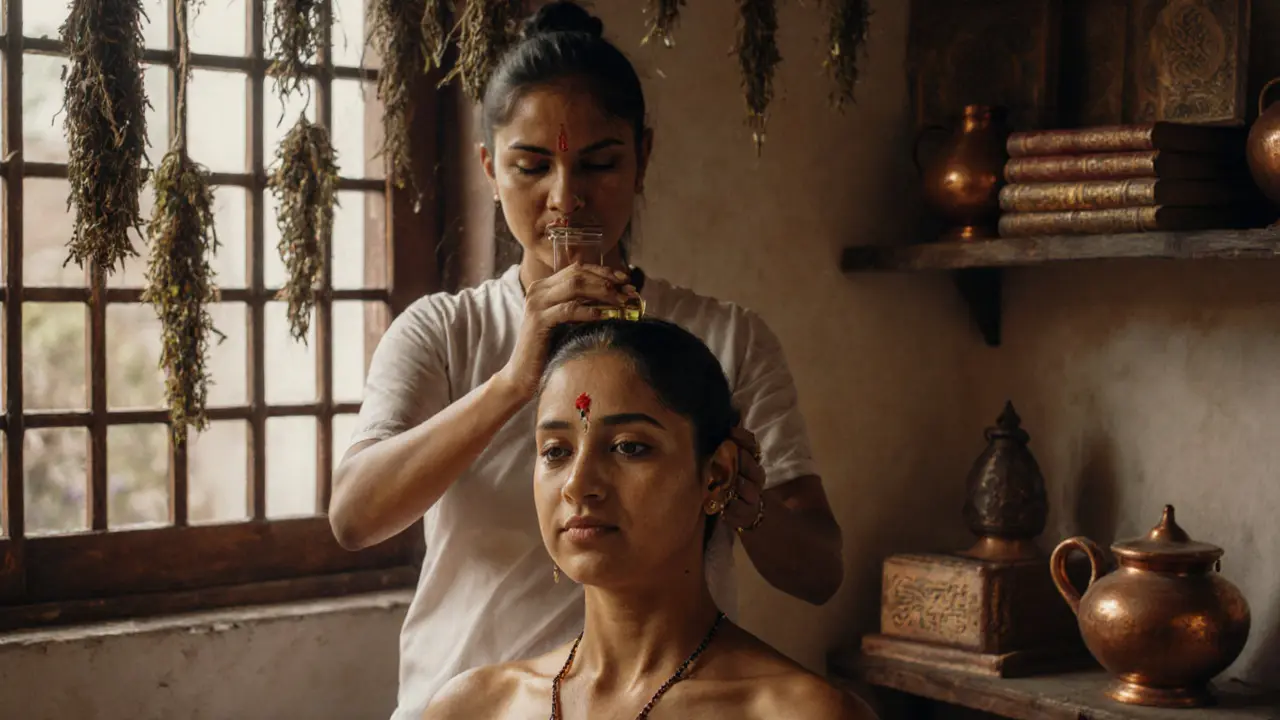
Who Benefits Most From Shiroabhyanga
You don’t need to be stressed out or sick to benefit. But some people feel the effects more strongly:
- People with chronic headaches or migraines
- Those with insomnia or poor sleep quality
- Individuals dealing with anxiety or mental fatigue
- People with dry scalp, brittle hair, or early thinning
- Office workers who sit at desks all day - the neck and shoulder tension is real
It’s also popular among people recovering from illness or surgery. Ayurveda says the head holds the body’s energy, and when you’re weak, shiroabhyanga helps rebuild it gently.
Even healthy people use it as preventative care. Think of it like brushing your teeth - but for your nervous system.
What You’ll Feel After a Session
Right after a shiroabhyanga, you might feel a little heavy-headed. That’s normal. The oil is still soaking in. Within an hour, most people report:
- Deeper, calmer breathing
- Lighter, clearer thoughts
- Warmer hands and feet - circulation improves
- Improved focus for the next few hours
- A sense of quiet, like your mind finally stopped buzzing
Some people say they dream more vividly the next night. Others notice their hair feels softer and stronger over time. It’s not an instant fix - but after a few sessions, the changes stick.
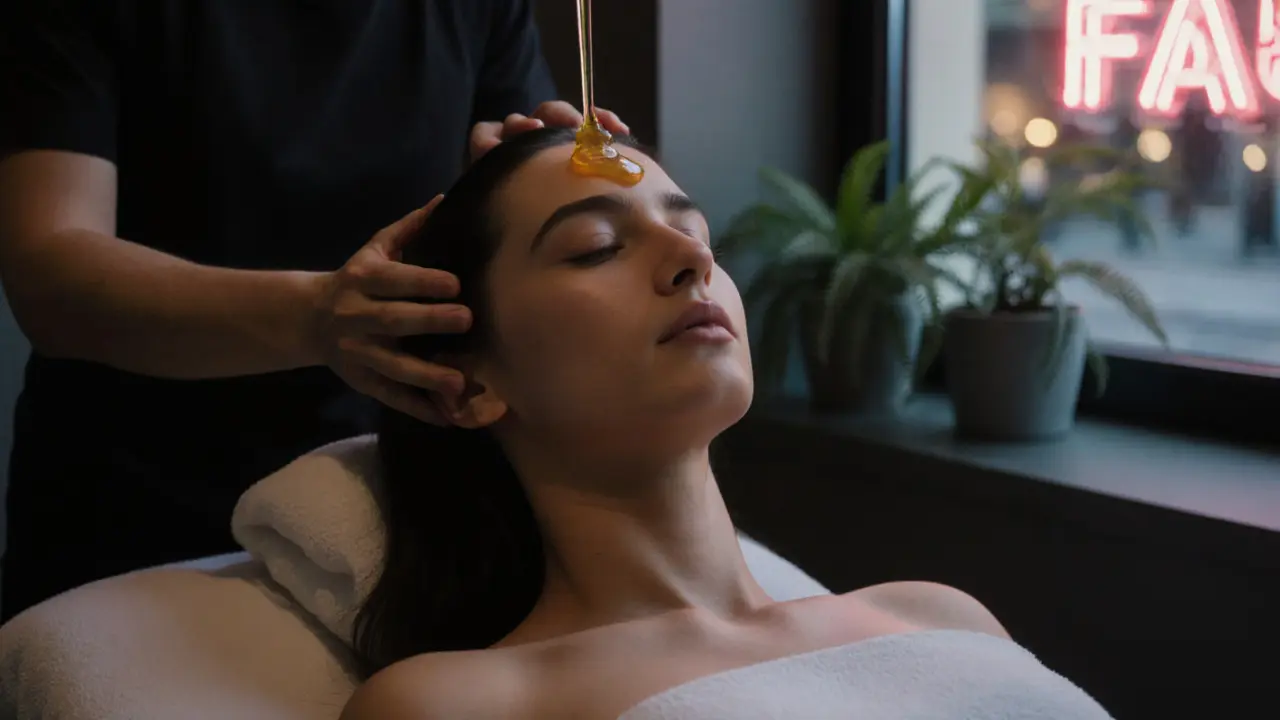
Shiroabhyanga Today: From Villages to London Spas
In rural India, shiroabhyanga is still part of daily life. Grandmothers give it to children before bed. Men in villages get it after a long day in the fields. In cities like Varanasi and Kerala, it’s offered in traditional Ayurvedic clinics alongside herbal teas and detox routines.
In London, you’ll find shiroabhyanga in wellness centers in Notting Hill, Camden, and Shoreditch. But not all "Indian head massages" are true shiroabhyanga. Some places skip the oils, shorten the time, or use synthetic fragrances. To get the real thing, ask if they use warm herbal oils and follow Ayurvedic pressure points. Look for therapists trained in Ayurveda - not just certified in general massage.
Authentic shiroabhyanga in London usually costs between £50 and £80 for a 50-minute session. It’s more expensive than a standard head massage - but you’re paying for tradition, not just touch.
How to Try It at Home
You don’t need a spa to experience shiroabhyanga. You can do a simplified version at home:
- Warm 2-3 tablespoons of sesame or coconut oil (gently heat it, but don’t boil).
- Apply the oil to your scalp using your fingertips in small circular motions.
- Massage from the forehead to the back of the head, then down the neck and shoulders.
- Leave the oil on for at least 30 minutes - overnight is better.
- Wash it out with a mild shampoo.
Do this once or twice a week. You’ll notice the difference in your sleep, your focus, and even how your hair feels.
What to Avoid
Shiroabhyanga is safe for most people. But skip it if you:
- Have open wounds or infections on your scalp
- Are recovering from recent head surgery
- Have severe high blood pressure without medical clearance
- Are allergic to any of the oils or herbs used
Always test a small amount of oil on your wrist first. And if you’re pregnant, talk to your doctor before starting.
Is shiroabhyanga the same as Indian head massage?
Yes - "Indian head massage" is the modern, Western name for the traditional Ayurvedic practice called shiroabhyanga. The core technique is the same: oil-based massage of the head, neck, and shoulders. But many spas simplify it. True shiroabhyanga uses specific herbal oils, follows Ayurvedic pressure points, and lasts at least 30 minutes.
Can shiroabhyanga help with hair loss?
It can help slow it down, especially if the cause is stress or poor circulation. The massage increases blood flow to hair follicles, and herbal oils like brahmi and bhringraj are known in Ayurveda to strengthen roots. It won’t regrow hair where follicles are dead, but many people report less shedding and thicker hair after consistent use.
What oil is best for shiroabhyanga?
Sesame oil is the most traditional - it’s warming and grounding, ideal for Vata and Kapha types. Coconut oil is cooling and good for Pitta types. Almond oil is mild and nourishing. Many practitioners blend oils with herbs like brahmi, neem, or rosemary for added benefits. Avoid mineral oil or synthetic fragrances - they defeat the purpose.
How often should I get shiroabhyanga?
For general wellness, once a week is ideal. If you’re dealing with stress, insomnia, or headaches, twice a week for a month can make a big difference. After that, you can reduce to once every two weeks. Daily self-massage with oil is also safe and beneficial.
Does shiroabhyanga work for migraines?
Yes - many people with chronic migraines find relief. The massage reduces muscle tension in the neck and scalp, calms the nervous system, and improves circulation. A 2020 study showed a 40% drop in migraine frequency after four weeks of weekly sessions. It’s not a cure, but it’s a powerful tool for managing triggers.
